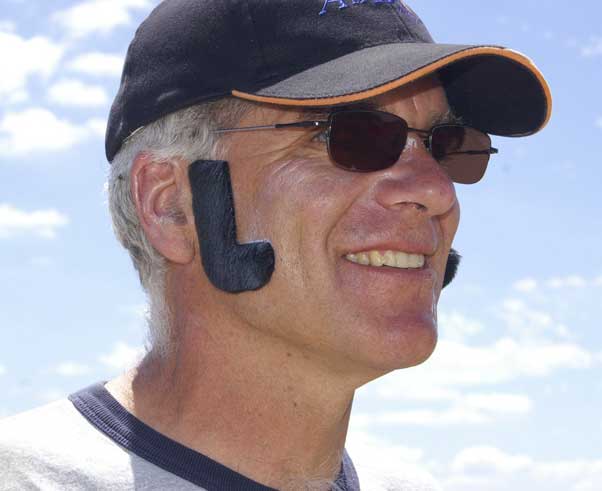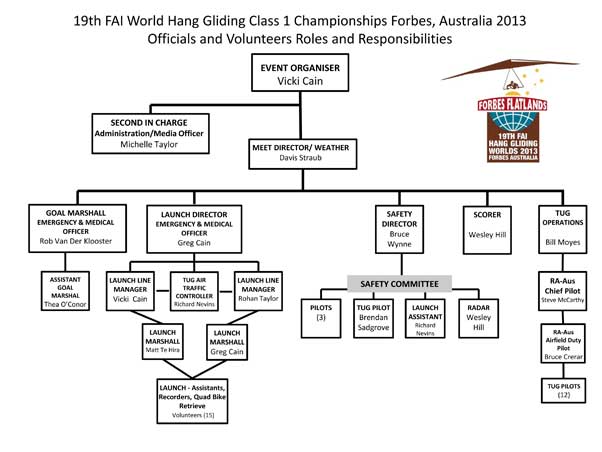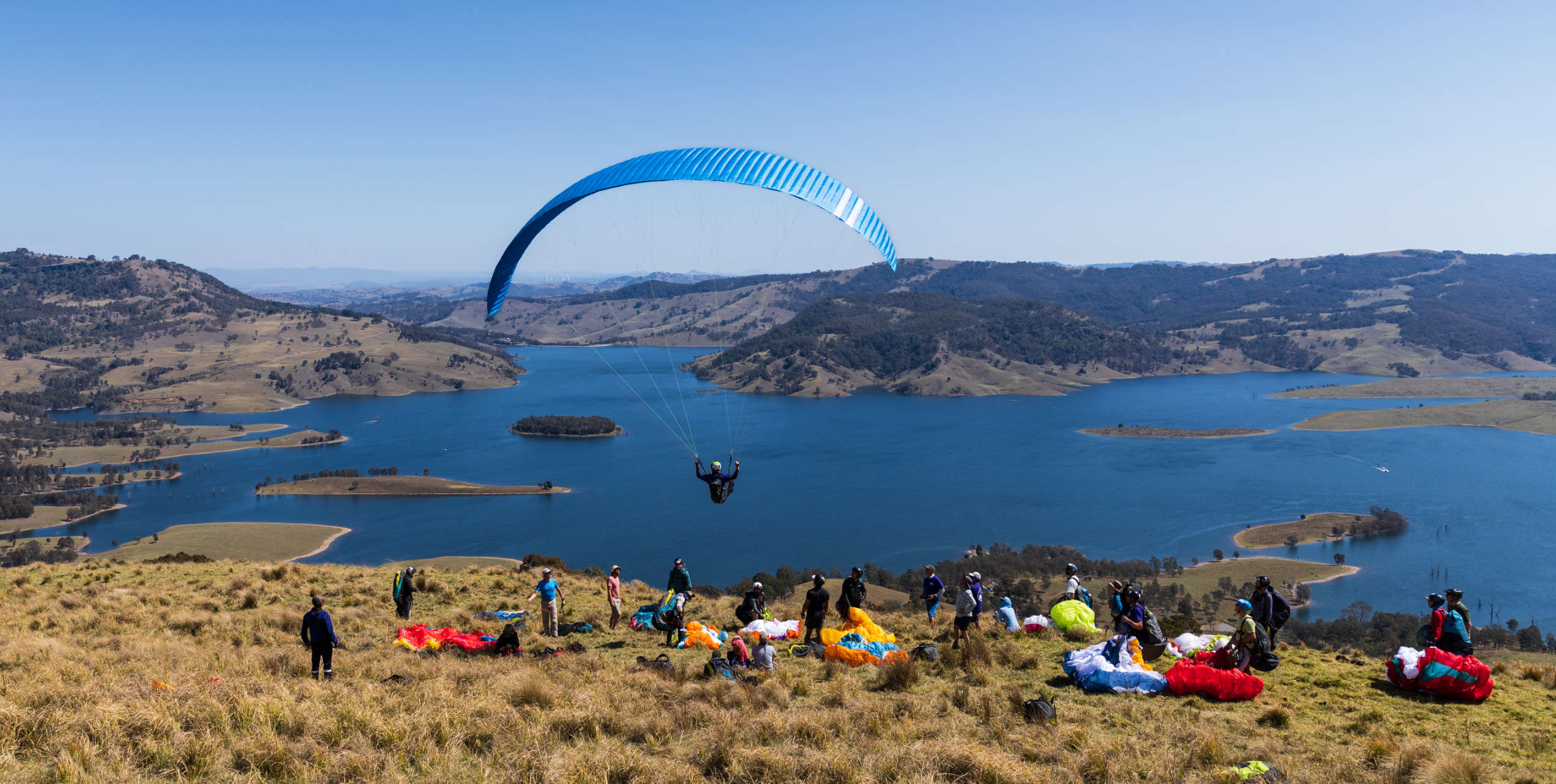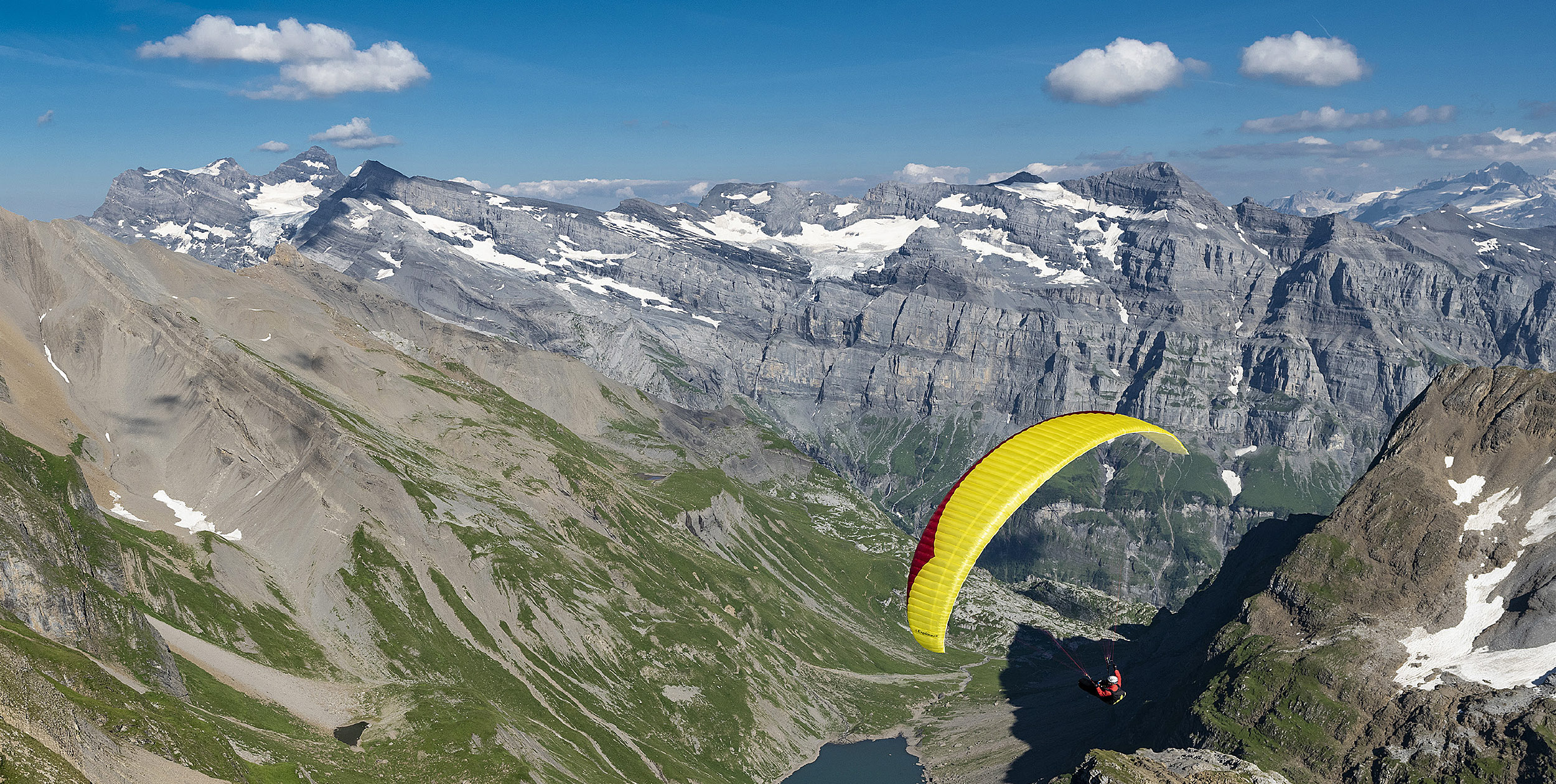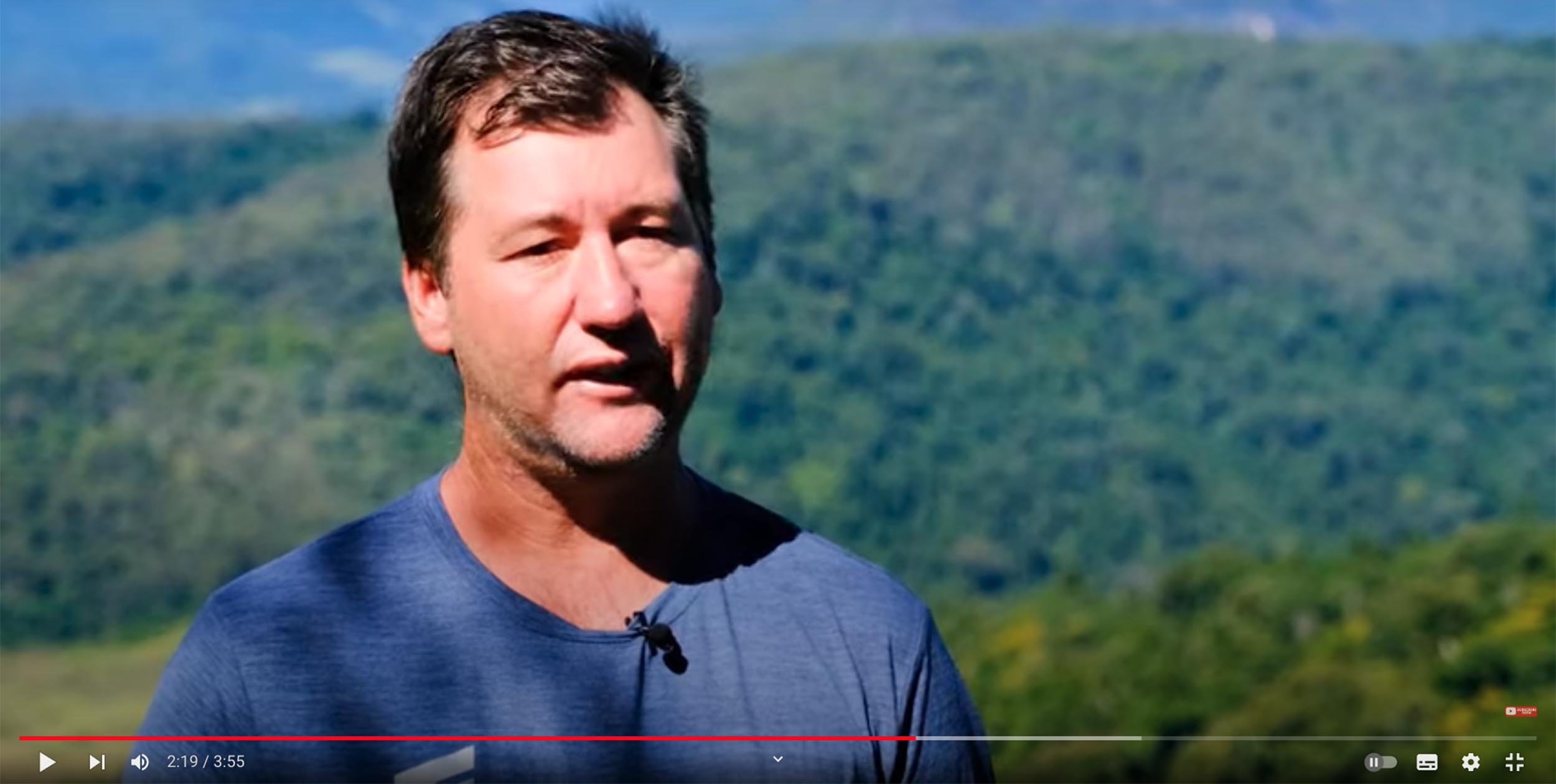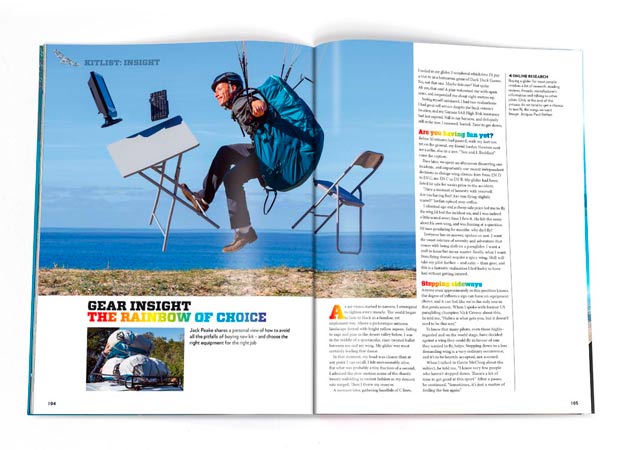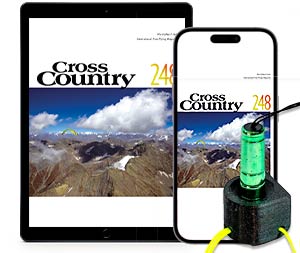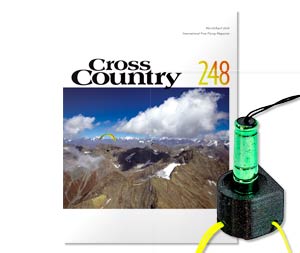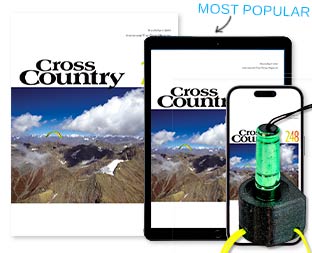The Hang Gliding World Championships kicks off on 7 January 2013 in Forbes, Australia and lasts for two weeks. Over the next few days we’ll be running a series of interviews with some of the pilots involved. With expectations high for a classic comp, we spoke first to meet director – and Oz Report editor – Davis Straub to find out what to expect…
Davis, you’re the boss at the World Championships this year in Forbes. Can you tell us what your role is, and what you’ll be doing?
I’m the meet director for the Worlds, which is not like being the king of the World. It is more like being president of a divided government.
I’ve got a CIVL Steward (Flip Koetsier) that I have to check with to make sure that I am following the Sporting Code if and when I make a decision or make a statement. I’ve got the Jury President (John Aldridge) who can stop the competition at any time if he feels that I’m not following the Sporting Code.
That means I’ll often be looking a bit indecisive as I can’t know all the rules in my head. I also work for the meet organiser, Vicki Cain, and have to be attentive to what she wants and what she can provide to the competition.
I’ve enclosed the organisation chart which diplomatically doesn’t display the absolute power that the CIVL officials have over me. The tasks are greatly divided up and the responsibilities will fall on many shoulders. I know from experience how well these people do their jobs, so I am not worried about things as they will go smoothly.
As the executive who is responsible for driving the competition along I will be convening the pilot and team leader meetings as well as the task committee.
I will also be the weather man for the competition, a job that someone else usually takes, but that I have been doing for years, as well as being the ex-officio meet director in the previous competitions.
It is my main job to take the advice of the task committee and then set the task after clearing it with the safety committee and safety director. The Sporting Code states: “Task setting and selection remains the ultimate responsibility of the Competition Director, but a task will not be flown without prior reference to the TAC.”
I will have the power to suspend launch, cancel (in advance) or stop the task if there are significant safety concerns on the task (as will the safety director). I’ll be in contact with drivers to determine weather conditions on the course line.
I’m responsible to make sure that the goals are suitable and the Steward will be looking over my shoulder on that (and he is also on the task advisory committee).
I’ve got to assess the skill level of the pilots to determine what conditions are safe for them to launch and fly in. I’m working hard on that in advance.
I’m responsible for assess penalties and bonus points. I’m responsible for setting a rest day.
I’ll be taking any complaints about the competition and hopefully dealing with them in a manner that makes it so they don’t escalate into a protest.
I have numerous other responsibilities and hopefully I can remember all of them and carry them out when the time comes.
At the moment I am taking on the task of preparing for the competition, communicating with the Steward and Jury President to clarify any issues, and being open with pilots about the various issues that I am dealing with by posting at the Competition Pilots Association Facebook page.
So what can we expect from Forbes this year?
It’s a substantial competition that will last over 11 days. I expect that we will fly 10 of those days. Actual flying will start on 28 December and the first full fledged practice day is 6 January 2013. There will be a Red Bull sponsored spot landing contest at 9am on 5 January. The competition starts officially on 7 January.
What’s Forbes like to fly?
It’s flatland flying. We will be towing from a wide open field allowing us to tow into the wind no matter what its direction. The countryside is rolling pasture and cultivated farmland with occasional low-lying forested ridge lines. We’ll be able to fly long distances away from Forbes when the winds are significant, perhaps 250 to 300km, but we would rather come back to Forbes if the winds are light enough.
The areas around Forbes are not particularly desolate, unlike further west at Hay, where we held the last Worlds in Australia, and retrievals are without much drama. There is almost always a nice flat open field with nearby dirt road under you as you fly the task so you don’t have to be very concerned about your landing options and can concentrate on staying in the air.
The thermals are big and fat and you’ll usually get to at least 5,000ft (1,500m) over the ground. There are often cu’s but plenty of blue days also. Winds can be light but they can also increase. We are not launching in winds over 25mph.
We have a permit to fly up to 14,000ft, 4,000ft higher than the normal 10,000ft restriction. We rarely get to 10,000ft. But it is likely we will get to near that altitude or above on a day or two during the competition.
We have very few air space restrictions around Forbes, but there are now a few controlled airfields that we will need to avoid but hang gliding pilots can actually fly through if they have aircraft radios on board. Since we don’t feel that it is fair to require that all competitors have these radios, we will avoid these areas.
We do have permission to land at some airfields and will be allowed to transit through some to of these CTAF areas.
Forbes is not as smooth and as consistent as flying in Texas at Big Spring or Zapata, but it is big time flatland flying for pilots who want to go far and fast. It’s so wide open that after the start pilots will quickly spread out.
And what will a typical task look like? What sort of conditions can pilots expect at this time of year?
Results from previous Forbes Flatlands can be found here.
A typical task is found here.
It shows a 202km dogleg task which took a little over three hours for the fastest pilot and almost five hours for the slowest with 46 pilots at goal.
Tasks will vary from 100km to 200km with some longer on windy days. We’ll try for tasks that require at least two hours for the fastest pilots, but no more than four hours for the fastest pilots. There will often be two or three turnpoints along the way to get us around forested areas and get us back near Forbes in lighter winds.
Conditions will be strong sometimes and weak at others. This is summer for Australia and we expect good flying every single day, although there could be a thunderstorm every now and then. Unlike in Italy in 2011, we will not fly only two days out of 14. We have been flying at Forbes for many years and it is always good.
And what speeds do you expect the leading pilots to fly the tasks in?
The top pilots will average between 25 to 30mph (50km/h), including climbing and gliding, plus or minus the wind speed value. On the task above Attila averaged 56.7km/h (35mph). I assume that the wind was about 10mph.
For pilots who don’t know, can you explain a little bit about the performance of a race-tuned comp hang glider?
I personally take the glider from the manufacturer and fly it as is. I don’t think that there is any substantial tuning to be done. Others, say Dustin Martin, may be sure that all the sources of drag have been covered up.
There is no need to change the sprog settings (as Dustin’s inside the wing video that I published in the Oz Report shows). I would say that the manufacturers build their top-of-the-line gliders to be raced right out of the bag.
A topless glider like the Moyes RX 3.5 or the Wills Wing T2C 144 most likely has a best L/D at 15:1, but frankly you almost never fly it at best L/D. You are flying it at high speed when on glide (between 45 and 55mph in strong conditions in competition) and you are getting maybe 10:1 or 9:1 glide at that speed.
In weak conditions you will slow down substantially, and try for best L/D just to be able to get to the next spot of lift.
While you are not supposed to do it you can apparently fly these slippery little ships with full VG clamped on at 85mph (145km/h). That doesn’t make much sense unless the air is smooth (VNE is 50mph) and you are racing into goal (the air is almost never smooth when you are racing into goal).
The prices vary considerably. The Wills Wing T2C-144 is $8,585. A Moyes Litespeed RX 3.5 varies between $11,747 and $14,117 in the US.
There have been a couple of not-that-hot World Championships weather-wise in a row. The one in France saw a few days cut short or not flyable, Italy 2011 was a washout. What do you expect this year?
Weather for the Worlds is found here.
I expect dry conditions. I expect that we will be able to fly every day. Forbes and Big Spring, Texas have the best weather of the places that we have major competitions.
Latest weather and averages can be found here.
It’s Australia, it’s a tow comp, it’s not cheap. What are the costs involved for a comp pilot to fly the Worlds these days?
One Australian dollar = $1.053 US or €0.80
Meet fee including towing: $1150 AUD
Airfare from Europe or US to Sydney: $2,000 AUD
Room and board for two weeks: $1,500 AUD
Portion of a team rental car and retrieval: $500-$1,000 AUD
Local phone: $150 AUD
Can you give us some stats: How many pilots? How many nations? How many tow pilots?
We have 108 pilots from 23 countries with eleven tugs, and I presume eleven tow pilots. Seven women, most on the 6+2 plan.
The pilot list is here.
Are there any special rules related to the fact that it is a tow comp that pilots, or people watching online, would do well to understand?
Tow pilots can’t tow pilots more than 2,000ft AGL (600m AGL). On some days there will be a maximum height for leaving the start cylinder. Tow pilots will have to drop off pilots in a designated area. There will be multiple start times.
There are very few cell towers (mobile phone masts) out in Australia and there is no competition setup for live tracking although some pilots will be on SPOTS.
In your preparations for this comp, what issues have been thrown up? Any potential trouble spots / choppy water ahead?
Sure, many issues have been discussed. Most have been resolved without much animosity. Right now we are wondering if we, the organisers, are going to have to know if any particular glider is certified. Haven’t asked the right people yet.
I think that we have the sprog testing rules all worked out. We’ll see.
You can keep up to date with it all here.
You’ve said that pilots should prepare to come to Oz and have a lot of fun. What are you most looking forward to?
Getting the pilots completely exhausted because they fly hard every day (unlike in Europe where we sit around in cafes). When pilots fly they don’t have time to argue about minutia.
You won’t be competing yourself… who is on the US Team this year, who grabbed your slot?
Mitch Shipley or James Stinnett. I tore my rotor cuff (Supraspinatus) tendon in the 2011 Santa Cruz Flats Race, so I missed a number of qualifying races.
And looking at the field, who do you think is in with a chance? Will it be Jonny Durand’s year? Surely he is the favourite…
Jonny should do well. Former world champion Attila Bertok would be favoured. He’s flying well and was second last year. The Italians. World Champion Alex Ploner and Christian Ciech.
Manfred, of course. Rohan, last years’ winner. Scott Barrett who was third last year. Zac, Kraig, and Paris from the US as well as Robin Hamilton. There are a number of other top pilots that could win it all.
There is also the team competition, and could the Australians win in their home turf?
Looking down the pilot list there are a lot of old hands there. But are there any young guns to watch?
Pedro Morelli, Jonas Lobitz, and the others wouldn’t be known to me. I’m betting on the established winners.
We know what happened in the Paragliding Worlds last year. When you look at that from your perspective, as a comp pilot with 30 years experience, can you draw any parallels with what the paragliding comp world is going through now, and how hang gliding competition evolved?
There really are no parallels. Safety seems to have been taken care of years ago in hang gliding and it just can’t be compared to what happened in Spain.
That said, we have had one death in each of the last two World Championships held in Australia. We are most concerned about launching conditions in the tow paddock and flying conditions in tight gaggles right near the tow paddock. We are placing almost all our safety emphasis on these areas of concern.
Safety is always a big issue. Anything particular here to note?
Launching in stiff winds. That’s by far the biggest safety issue. The landscape is friendly and retrieval fairly easy. Not too many things to hit.
Some pilots will have SPOTS, but likely not trackers. I will bring mine and put it on some pilots.
I’ll report on where you can find pilots online when I know. Nothing has been arranged in advance.
You’ll also be reporting on the comp on the Oz Report. For those who don’t know, tell us again why the Oz Report is called the Oz report? It’s almost like you’re coming home full circle…
I started the Oz Report as an email newsletter sent back to my fellow hang glider pilots in the Seattle area reporting on flying in Australia in 1996-1997. I have been going to Australia and flying hang gliders there every year but one since then. The Oz report covers hang gliding competitions heavily.
You can keep up to date with reports from the Worlds here:
We know these events couldn’t happen without sponsors. Any you want to mention here?
Sponsors are a rarity in hang gliding, but we couldn’t afford to put on a world championship without substantial support.
Moyes gliders, of course, with Vicki Cain as the meet organizer. The shire council with substantial monetary support and the New South Wales Government.
There’s a sponsors list here.
Anything else you’d like to add?
We basically have a really good time in Forbes because of the outstanding flying conditions. Pilots fly until they can’t stand it any more (they should work on their conditioning).
The town is a nice country town, very friendly and helpful to us, with substantial financial support. While it is small it does have decent food, a nice pool, and other opportunities to engage oneself. I’ll be biking a lot on the empty highways.
Good luck, and have a great competition. Thanks for your time.
Follow the action at:
• Got news? Send it to us at news@xccontent.local

